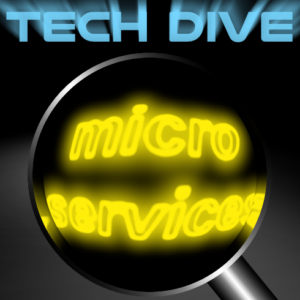Worth Reading: Developing the Internet of Things
The post Worth Reading: Developing the Internet of Things appeared first on 'net work.
Docker for Mac and Windows is Now Generally Available and Ready for Production
Today, we are excited to announce that Docker for Mac and Docker for Windows are graduating from beta and are now stable and ready for production.
Continue reading
GE Will Let Developers Run Predix Off-Cloud
 Another bauble to dangle in front of developers.
Another bauble to dangle in front of developers.
Thinking Out Loud: My Career Planning
On average I usually think about my career at least 1 time every year and do an honest and deep “career inventory taking”. More often (sometimes 2-3 times a year) if my job or environment is changing a lot. Are the questions I ask myself each time the same? No. Why? Well cause time has passed. What do I mean by this? This means that over the years what I’ve seen is that my 1 year plan, 3 year plan, 5 year plan and 10 year plans have changed as I have changed.
For example ~26 years ago (when I was 25 years old) my plan was to become CEO of IBM by the time I was 35. LOL! (But that is a whole other blog: What’s at the “Top” of Your Ladder?) Obviously, between then (when I was 25) and now my annual “career planning inventory” questions and my focus on what I want as the “wins” in a job for me….. have radically changed. 
What do I mean by “my focus on what I want as the ‘wins’ in a job?” Well, again, when I was Continue reading
Microservices Gone Wild – Tech Dive Part 4

In this last post of my four-part series on microservices, I’ll look at some of the positive aspects of microservices, and how much simpler they can potentially make things once you overcome the up-front effort required to make them work.
Scalability
When a monolithic app needs to scale, how can that be achieved? Well, for example:
- More RAM (if the app is memory-bound)
- More or Faster CPUs (if the app is CPU-bound)
- More instances of the app (front with a load balancer)
These are all effective ways to scale the application. What if one function within the application could really use a performance boost, even though the others are working just fine? Using a load balancer to distribute work requests can mean that scaling up the ability for a single module to process concurrent requests can be as simple as spinning up a few more containers and sharing the load:

There’s some effort required to allow the main program to issue concurrent calls, but the benefits can be worthwhile. Plus, of course, each of our microservices may be called by other programs, or may call each other as necessary, so there may be more than just one source of activity. Continue reading
Enterprise Networks Bracing For Olympics
IT pros nervous about network performance and security with employees streaming the games at work, poll shows.
Rethinking Your IT Security Strategy
Before rushing out to buy more security products, enterprises need to re-evaluate their security priorities.